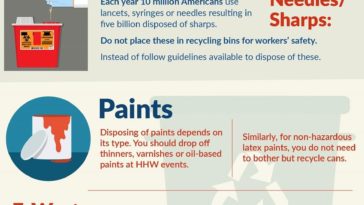Locating The Right Dumpster Dimension For Your Project: A Complete Guide
Locating The Right Dumpster Dimension For Your Project: A Complete Guide
Blog Article
Web Content By-Hahn Hunter
When starting a job that requires a dumpster, the size you choose can considerably influence its efficiency and cost-effectiveness. Imagine having the perfect container that suits all your waste without being exceedingly large or also tiny. It all begins with recognizing the nuances of your job and choosing a dumpster dimension that straightens with your particular demands. So, prior to you make a decision, think about the aspects at play to make sure a smooth waste monitoring procedure from start to finish.
Aspects to Consider
When deciding on the appropriate dumpster dimension, there are several crucial elements to think about.
Initially, think about the sort of waste you'll be throwing away. Various materials may require differing amounts of area, so understanding what you'll be placing in the dumpster is crucial.
Next off, assess the quantity of waste you expect to generate. If you take too lightly the quantity, you may need to make multiple trips to get rid of everything, which can be bothersome and pricey. On the other hand, leasing a dumpster that's too big can cause unnecessary costs.
Additionally, think about the room where the dumpster will certainly be placed. Make certain there's enough room for the dumpster to be provided and picked up with no obstructions.
Finally, think about any weight constraints that may use. Going beyond hop over to these guys can result in extra fees and even the rejection of service.
Dumpster Size Alternatives
For selecting the ideal dumpster size, it's vital to have a good understanding of the available choices. Dumpster dimensions commonly range from 10 to 40 cubic yards, with variants in between.
A 10-yard dumpster appropriates for small jobs like a garage cleanout or a small improvement. If you're tackling a medium-sized job such as a kitchen area remodel or a basement cleanout, a 20-yard dumpster might be the ideal option.
For bigger jobs like a whole-house renovation or business building, a 30 or 40-yard dumpster could be more suitable to accommodate the volume of waste created.
When deciding on a dumpster dimension, think about the quantity and type of debris you expect to take care of. It's far better to select a somewhat bigger dimension if you're unclear to stop overfilling. Bear in mind, it's more cost-effective to rent a dumpster that fits your demands instead of needing to purchase an extra one.
Matching Dimension to Project
Optimally matching the dumpster dimension to your task is crucial for reliable waste administration. To identify the appropriate size, consider the range and nature of your task.
For tiny household cleanouts or remodellings, a 10-yard dumpster might be adequate. These are generally 12 feet long and can hold about 4 pickup lots of waste.
For bigger tasks like renovating multiple spaces or clearing out a huge estate, a 20-yard dumpster could be more suitable. These are around 22 feet long and can hold around 8 pickup truck lots.
If you're tackling a major building and construction project or business improvement, a 30-yard dumpster could be the best fit. These dumpsters are about 22 feet long and can suit regarding 12 pickup loads of debris.
Matching the dumpster size to your job guarantees you have sufficient room for all waste materials without paying too much for unused capability.
Verdict
To conclude, picking the appropriate dumpster dimension for your project is critical for effective waste disposal. By thinking about https://www.phillyvoice.com/operation-hidden-treasures-discovery-jdog-junk-removal-philly-flanagan/ like the type and amount of waste, room accessibility, weight restrictions, and budget restraints, you can ensure you have the ideal size dumpster for your demands. Ensure to match the dimension of the dumpster to the scope and nature of your task to prevent overspending on unnecessary expenses.
